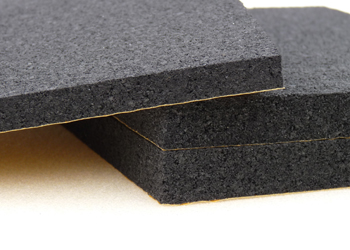sound
absorber: Non-Flammable (High density) Acoustic Foam
(FRHD)



overview
Similar to our normal non-flammable FR type sound absorbing foam FRHD is a Class 0 product produced to a much higher fire resistance and density to give more efficient lower frequency sound absorption in airborne noise and reverberation. It is very robust with good mechanical strength and can be applied to curved surfaces or compressed to fit complex and awkward shapes.
description.
FRHD high performance non-flammable acoustic foam based upon impregnation using Aluminium Tri-hydrate, to offer excellent Flame Retardency. A black impregnated, polyether, polyurethane acoustic foam with a density of 240kg/m3 and a uniform cell structure offering excellent sound absorption properties. Flame Retardant, compliant to BS476 Part 6: Class O, and BS476 Part 7: Class 1, UL94-HF1 and FMVSS 302.
Applications
This superior acoustic foam can be used in the same way as ordinary FR foam but is far more versatile. It is of particular use in heating and ventilation ducts, machinery guards, enclosures and even buildings. It also offers thermal insulation and has the advantage over other types of insulation of not losing dust or fibre particles.
This unique sound absorbing foam is based on a remarkable cellular bi-elastomer, which is incapable of supporting combustion, and will protect other materials from a wide range of dangerous ignition sources. The material is flexible and therefore, easy to fit.
Supplied plain or with a self-adhesive backing it is ideal for aerospace, oil rigs, small enclosures, machinery housings, heating and ventilation and the construction industry.
Our high performance self adhesive products adhere to most clean surfaces. In some cases secondary mechanical support maybe required employing fixing pins should the acoustic panels be large or inverted as is the case with roof panels. Please seek guidance from our technical team for further advice.
Note:The Information detailed is for guidance purposes and does not constitute a formal specification and results shown in our Technical Data are indicative values. We reserve the right to change values to further improve our product performance at any time.









